#179 Nanaimo & Johnny Cash
First published October 12,2017
Nanaimo journalist Julie Chadwick has helped The Man In Black’s manager in the 1960s and ‘70s, Saul Holiff, to posthumously present his recollections for The Man Who Carried Cash (Dundurn $19.95). The long-winded subtitle for this tale of a tempestuous but affectionate relationship is ‘Saul Holiff, Johnny Cash, and the Making of an American Icon.’
“From roadside taverns to the roaring crowds at Madison Square Garden, from wrecked cars and jail cells all the way to the White House… Saul handled the bookings and the no-shows, the divorce and the record deals, drugs, overdoses, and arrests. He was there for the absolute worst of times, but also for the best: Carnegie Hall, Folsom Prison, “A Boy Named Sue,” and Cash’s hit television series. But in 1973, at the zenith of Cash’s career, Saul quit. Until now, no one knew why.”
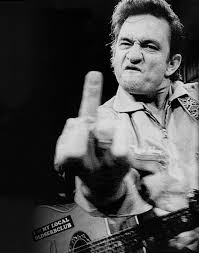
After Saul Holiff committed suicide in Nanaimo in 2005, a vast archive of materials was left behind in a storage locker. “I came across the story when Saul’s son, Jonathan, completed a documentary about his father in 2012 called My Father and the Man in Black,” says Chadwick, a former entertainment editor at the Nanaimo Daily News. She was eventually accorded access to hundreds of personal letters, audiotaped diaries covering forty years, phone calls, original photos, gold records, clippings, booklets and posters.
Holiff was one of the first promoters of many rock n’ roll artists in Canada: Bill Haley, Paul Anka, Little Richard, Carl Perkins and Buddy Holly. He also managed Tommy Hunter and June Carter.
Here follows an interview about The Man Who Carried Cash.
978-1-45973-723-5
AN INTERVIEW WITH JULIE CHADWICK ABOUT JOHHNY CASH AND SAUL HOLIFF
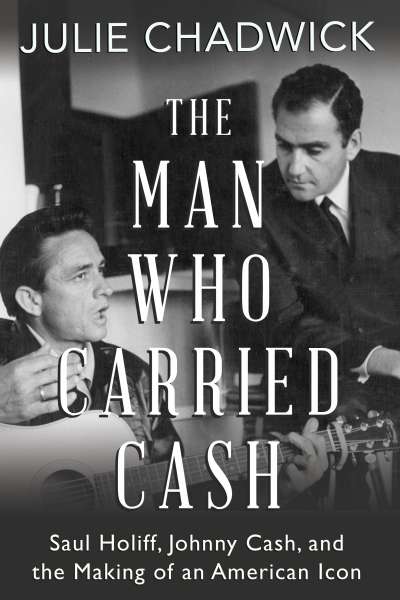 ORM: Most people are familiar with Johnny Cash’s legacy through the film Walk the Line. Is that an accurate portrayal or a Hollywood whitewashing of the Johnny Cash legacy?
ORM: Most people are familiar with Johnny Cash’s legacy through the film Walk the Line. Is that an accurate portrayal or a Hollywood whitewashing of the Johnny Cash legacy?
JC: Like many people, the film was my first exposure into the backstory of Johnny Cash. Though the film was based on Cash’s own autobiographies, I would characterize it as more “truth-adjacent”. It’s the nature of a Hollywood biopic to be flexible with the narrative, but personally I appreciate stories that adhere more closely to the truth. This was why I got into writing non-fiction; true stories, when told in all their contradictions, are complex and challenging and can offer great insights into human nature.
For example, there is a scene in Walk the Line where Johnny, June and Jerry Lee Lewis are touring together and Jerry says that they’re all going to hell for the songs they’re singing. Nothing in my research suggests that this scene ever happened, and in many ways, a true-life scene would have been equally compelling: while researching the book I learned that it was Saul who actually first put June and Johnny together, for a show at the Big D in Dallas in 1961. After that show, as all the band members begin to pile into their car to go to the next show in Oklahoma, June asked for a ride with the boys and ended up sitting in Johnny’s lap. It could have been an equally great scene, and more accurate.
There were two main things that stood out to me about the film: One was that the portrayal of Vivian Liberto (Cash), Johnny’s first wife, was pretty unfair. In the film, she was portrayed as unsupportive and argumentative when in reality, all indications were that she was an immensely loyal, loving person who endured their early years of poverty with dignity and patience.
The other piece that stood out to me was the striking absence of Saul Holiff. When the film first came out, James Reaney of the London Free Press wrote a column titled “Saul Holiff Deserves Role in Biopic,” in which he stated, “Almost anything must be possible because they’ve made a good movie about Johnny Cash in the 1960s without mentioning Saul Holiff.” It’s obvious that is not the film’s intention, as it is a love story, but it is a fair comment given Reaney’s extensive coverage of Saul’s career over the years. The book, in a way, seeks to remedy that and show the crucial role that Saul played not just in Johnny Cash’s career, but in managing artists like June Carter, George Jones and Tommy Hunter, as well as helping bring rock ‘n’ roll to Canada as a promoter in the 1950s.

ORM: How did you become connected to Saul Holiff’s story and what compelled you to take that connection and write a book?
JC: I came across his story while working at my hometown newspaper in Nanaimo, B.C. It’s a pretty small town, so the idea that Johnny Cash had a connection here seemed incredible. Saul lived in Nanaimo during the last years of his life and it was his son Jonathan that proposed the original story to me for the newspaper. When Saul committed suicide in 2005, he left behind a vast storage locker filled with materials about his time as Cash’s manager throughout the 1960s and early ’70s that included 60 hours of audio diaries, hundreds of personal letters, photos, posters, magazines, newspaper clippings, a massive scrapbook and hundreds of photos. Perhaps one of the most interesting pieces of the collection were a series of audiotaped phone calls between Saul and Johnny, recorded in the early 1970s.
Jonathan discovered this archive after Saul’s death, when he returned to Nanaimo from his home in Hollywood and it formed the basis of his award-winning documentary film, My Father and the Man in Black.
This is where I came into the story. After Jonathan contacted me, I wrote a front-page cover feature about Jonathan’s hometown film launch. While going through the materials for the piece it kind of clicked for me that this was a big story. I think I had anticipated that Saul was kind of a vague background figure, or a minor part of Johnny’s wider entourage, but when I saw the quality of the materials—the personal nature of the photos and letters, the depth of their relationship—I realized how integral he was to Johnny’s career, I knew it was a story I wanted to be a part of.

ORM: You say it’s part memoir – what sources make it a memoir rather than a straight biography?
JC: I suppose I’d say it’s a bit like a memoir because unlike many biographies, the nature of Saul’s diaries—in many cases he was recording his impressions of things right as they happened or in the months and years immediately after—I was able to write the book in an “as it happened” style which I think gives it more of a fast-paced, current feel, which is more like fiction or memoir. Though the book relies on extensive research, I often defer to Saul’s account of things, especially in cases where his version is an entirely new take on an old story. For example, in the book Saul tells a unique and somewhat funny story of how the song “A Boy Named Sue”, one of Cash’s biggest hits, came into Johnny’s hands from writer Shel Silverstein. It’s a different version than is told in any other biography.
This is what makes the book different—that it is from a whole new perspective. We have all heard the tales of Johnny’s rampant drug use during the 1960s, but I wanted to show what that would look like from a managerial point of view. Saul left behind fascinating memos and documents that show what it feels like to be the person pacing the living room at midnight before a ten-day tour, frantically fielding phone calls from guitarist Luther Perkins, Mother Maybelle, and the irate promoter when Johnny can’t be found anywhere. Or to be standing, waiting in Heathrow airport with Johnny’s entire entourage to fly to a huge show in Paris that took months to organize—only for Johnny to not show up because he’s partying with Bob Dylan.
I think I’m fascinated by the people in the background of a story—the people like managers who are by turns invisible and also blamed when everything goes wrong—but who are in fact often the ones who make everything possible.
 ORM: How much did religion play a part in the relationship between Johnny and Saul?
ORM: How much did religion play a part in the relationship between Johnny and Saul?
JC: Initially, not much. Saul’s family were Jewish immigrants from the Ukraine and he was raised atheist, and Johnny was from Dyess, Arkansas and was Southern Baptist. They came from different worlds in almost every way, and though I believe Saul always felt like an outsider—Johnny’s drummer Fluke Holland told me they would sometimes tease him about being Jewish, which he found hurtful—religion wasn’t an issue until Johnny became “born again” in the early 1970s and decided to use his new platform of fame to essentially spread the word of God.
For me this was probably one of the book’s most interesting themes—how that move then affected not only the viability of his career but also led to tension in Johnny’s relationship with his manager. Saul’s recorded telephone calls with Johnny throughout the early 1970s often illustrate this point—the awkwardness that ensues when you have to break it to your client that what they want to do is really not commercially viable. In this case it was Johnny’s desire to make a film about the life of Jesus, which ended up being released as The Gospel Road.

ORM: Why do you think Saul recorded an audio diary and his phone calls with Johnny?
JC: That’s hard to say. I think it spoke to Saul’s meticulous nature—he was an obsessive record-keeper and worked well under pressure, which contributed to his outstanding accomplishments as a manager as his operations were fastidiously organized. He also had an almost spiritual reverence for fairness and keeping his word, and found it distressing when people got ripped off, which led him to often get a fair count from promoters in a time that that was rare. There were also dozens of lawsuits filed against Johnny over the time he was his manager, so there were many motivations for wanting to keep an accurate record of things. There was also a lot of uncertainty around Johnny’s drug addiction. Though he had become stable into the 1970s, there were many times he would commit to things and then deny that he had agreed to them the next day, or forget what had been discussed, so that also may have been why. He did not, however, record them to be used in a book or a tell-all, and as far as I know he never showed the recordings to anyone until they were unearthed after Saul’s death. A lot of his time was spent trying to keep Johnny out of trouble and that sometimes meant hiding things. One of the photos in Saul’s collection was a mugshot taken in Folsom Prison in 1966 that has been called one of the most valuable photos ever taken of Johnny Cash. It is likely a gag mugshot, as there is no prison number, and I wonder if Saul hid it away to prevent it from getting out to the public.
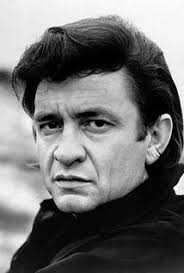 ORM: The story of Johnny and Saul takes place primarily in the 1960s. Was there anything about this era that you found compelling?
ORM: The story of Johnny and Saul takes place primarily in the 1960s. Was there anything about this era that you found compelling?
JC: Absolutely, much of the story very much had a Mad Men-type feel for me, down to the pre-show party prior to Johnny’s first Carnegie Hall performance that Saul organized. It took place on the 48th floor of the Time & Life building that was also featured in the fourth season of the show. Saul was brooding, intense, and tortured; very much a Don Draper-esque character, which I think really embodied what men were like in the 1960s. Men back then rarely talked about their emotions, and so they often dealt with their issues (or didn’t) by drinking. Saul was no different. I think that is why he recorded things in his diary so often, it was a form of therapy for him to sit, locked in his office alone and talk into his recorder. It was fascinating to see how Saul and Johnny would have massive arguments—Johnny once threw a guitar at him, which smashed against the wall—and on at least three occasions actually “broke up”, but would then reconcile in these weird, silent ways without really addressing anything. I think that was emblematic of men’s relationships in the 1960s.
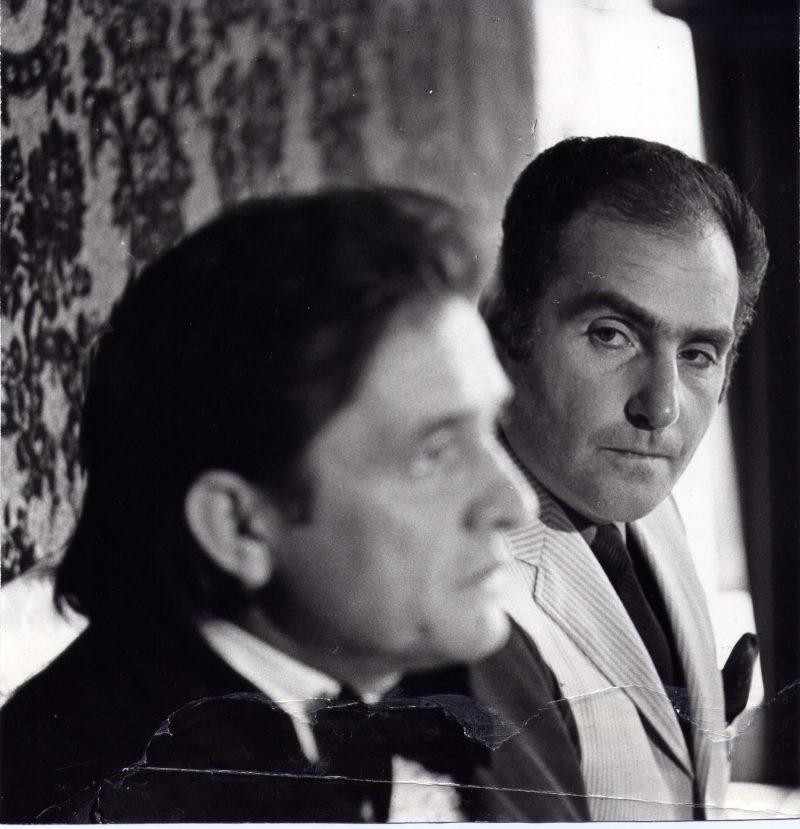
The other piece that fascinated me was the artistic and political landscape of the 1960s. It was an immensely innovative time when musicians were one step ahead of their handlers, one step ahead of the record company executives, who were often playing catch-up with what was popular, which often gave young creatives an unprecedented amount of power and resources.
I found that even though I thought I knew a lot about the 1960s, I was shocked by the intensity of the politics at that time, the riots that raged through cities and the power of groups like the Ku Klux Klan. In Saul’s records I found newspaper clippings and letters that detailed how Saul and Johnny spent two years fighting the KKK, who threatened to kill Johnny because they mistakenly thought his first wife Vivian was black. It’s an extraordinary story.
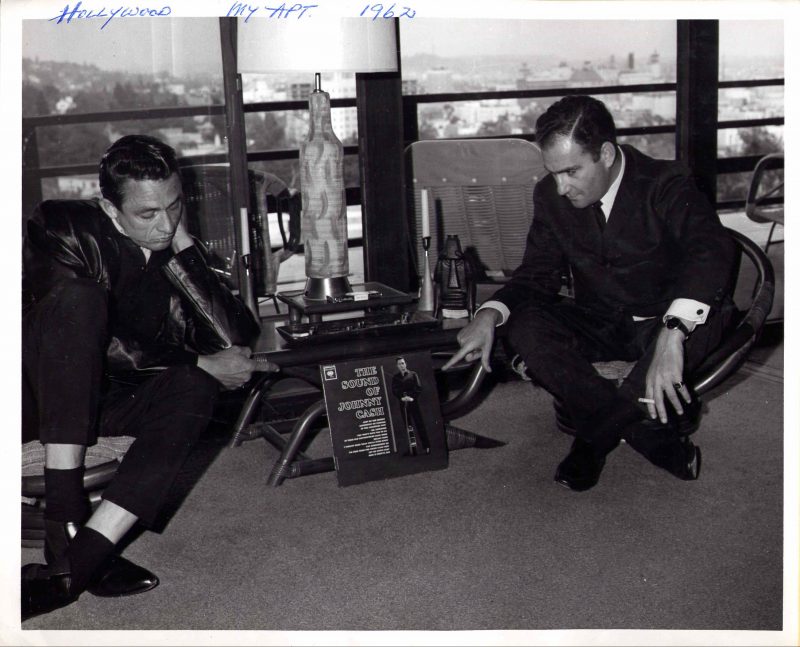
ORM: The contents of Saul’s storage locker are arguably extremely valuable. What are Jonathan’s plans for those? The auction block perhaps?
JC: The family strike me as pretty low-key, and though Jonathan made a documentary about his father it was done with the motivation of describing his own personal journey of getting to know his father rather than a salacious tell-all. That said, they probably have fielded offers to buy parts of, or all of, the archive, but instead are in the process of turning it over to an institution where it will be made available to the public, at some point in the future. Interestingly, before his death in 2005, Jonathan told me that Saul had promised his wife Barbara that he would actually get rid of the materials in the storage locker, and had been going in there and removing full garbage bags and throwing it away. It’s not known what was lost, but the gold records that were in there are the only ones that survived, the others he either gave away or auctioned off to charity.
ORM: What discovery that you made while writing the book surprised you about Johnny and Saul the most?
JC: I think maybe the intensity of Johnny’s drug problem. Within a two-year period Saul reeled from the crisis of Johnny burning down an entire forest in California, for which the federal government sued him, lawsuits over multiple missed tours which was earning him the reputation of being Johnny “No Show” Cash, the fallout of a very public arrest for drug smuggling in El Paso, and an ongoing affair with June Carter which resulted in Johnny’s first wife Vivian filing for divorce. All of this was up to Saul to oversee and fend off, in addition to his regular managerial duties, which were severely impacted by the fact that many of the shows and tours he was organizing then got missed, which affected his own commission, let alone the promoters. Amidst all of this, the Ku Klux Klan also attacked Johnny, which was a battle that both men waged for two years. Saul’s home life was also increasingly stressful; his wife had a baby and was soon pregnant with their second son, so aside from any personal loyalties he was tied to Johnny financially as well.

ORM: Johnny’s wife June Carter Cash was a major figure in the singer’s life. How much did she play into the relationship between Johnny and Saul?
JC: Well, Saul served as June’s manager for years, so they had their own relationship, but their professional association was pretty much as part of the Johnny Cash Show troupe. She was the one who, along with Marshall Grant, was often tasked with finding Johnny’s pills and flushing them down the toilet and generally keeping him alive while Saul handled the legal and logistical tribulations.
There were moments in which Saul and Johnny’s relationship and its conflicts triangulated to include June; at one time in particular, Johnny had disappeared with Bob Dylan in London and blew off a major date in Paris that had taken Saul months to organize. It was a major blow and Saul was so incensed that after some consideration he subsequently quit. At that point their conflict drew June in, when Saul confided in her that he felt he was being treated unfairly. This drove Johnny crazy, and he rattled off a long telegram was to Saul from on the road in Syracuse that essentially roasted him for turning to June instead of him. Johnny was afraid that June now thought Johnny was stabbing Saul in the back and that it would drive a wedge between them. It was all very dramatic. There are several emotional letters in Saul’s collection that are either addressed to June but are instructed to be given to Saul and vice versa.
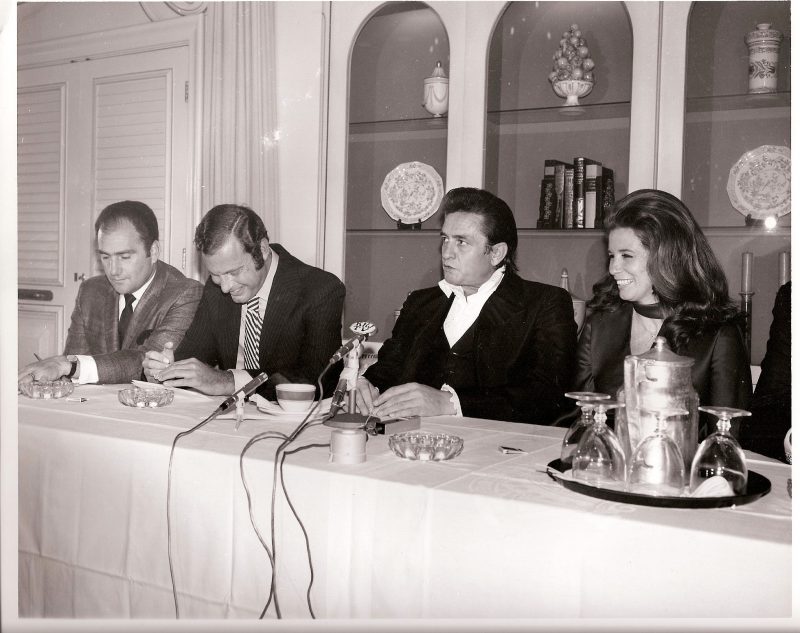
Part of the issue was that when it comes to heavy addiction, there is a lot of volatility involved, and not always a surplus of logic. So, Saul relied on people like June, Marshall Grant and Johnny Western to provide stability and backup when dealing with Cash. At times, Saul would get June to be a witness to his conversations with Johnny, because the instability of the drugs would cause him to agree to things and then later deny that he had agreed to them, and June often had to serve as the go-between.
ORM: Is there enough material in that archive for another book?
JC: I worked hard to create a tight, fast-paced story, and primarily used only what directly served the narrative, but that said, this story has been told with depth, detail, and intensity. So no, there would not be enough for another book about Johnny and Saul as I pretty much mined it for what it was worth. However, there is a wealth of visual material that has not been used that I believe would make a beautiful coffee-table type book. The posters, letterhead and early press kits for Johnny Cash, many of which were designed by Saul’s wife Barbara, are stunning and in great condition. There are also hundreds of photos—I used 40 in the book, which is a fair amount—but there were many more that could be included, especially if Canadian newspaper and university archives contributed what they had on file.
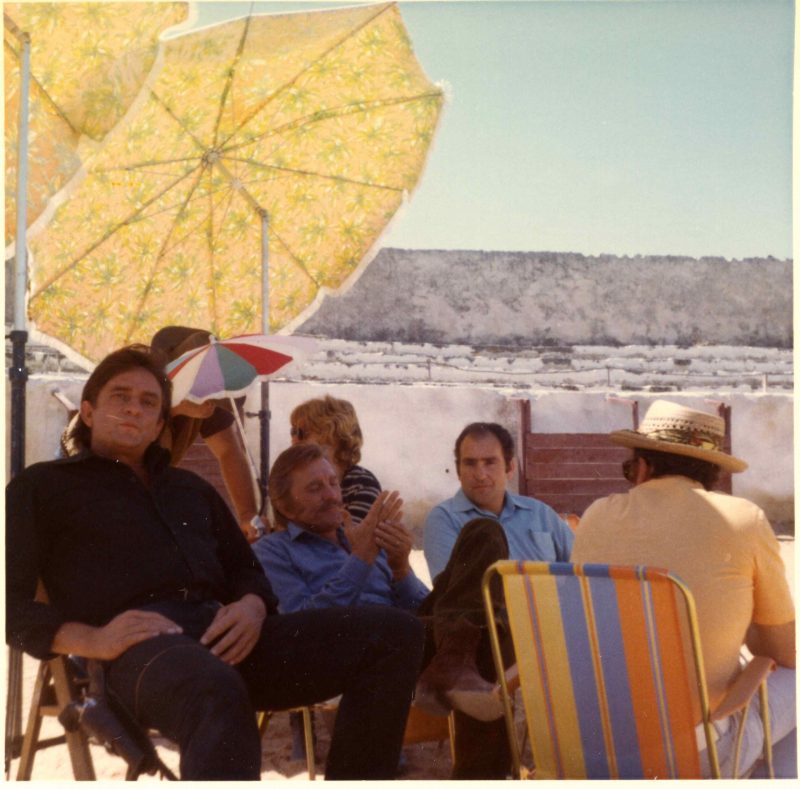
One interesting note is that outside of Saul’s archive, I found a lot of original and unused source material in Canadian magazines and newspapers. I think because many biographers are American, and Johnny is American, they tend to look for source material primarily where they are. Which is natural. But of course being Canadian, researching a Canadian manager, I looked at a lot of the historical archives here and found a lot of material and stories that had never been used. Saul’s clippings, which he was obsessive about, were also an absolute treasure because some of them were from publications that are now out of print or were never archived. For example, Saul saved a long and heartfelt editorial that Johnny wrote for the religious journal Guideposts in 1970 called “I’m a Free Man Now,” which I used for the dialogue in the jail cell scene that takes place in Georgia. So, finding new material on old stories, in different places, was a great part of going through Saul’s archive.
— Ormsby Review 2017
*
The Ormsby Review. More Readers. More Reviews. More Often.
Reviews Editor: Richard Mackie
Reviews Publisher: Alan Twigg — BC BookWorld / ABCBookWorld / BCBookLook / BC BookAwards / The Literary Map of B.C. / The Ormsby Review
The Ormsby Review is a new journal for serious coverage of B.C. literature and other arts. It is hosted by Simon Fraser University. The Advisory Board consists of Jean Barman, Robin Fisher, Cole Harris, Wade Davis, Hugh Johnston, Patricia Roy, David Stouck, and Graeme Wynn.
“Only connect.” – E.M. Forster